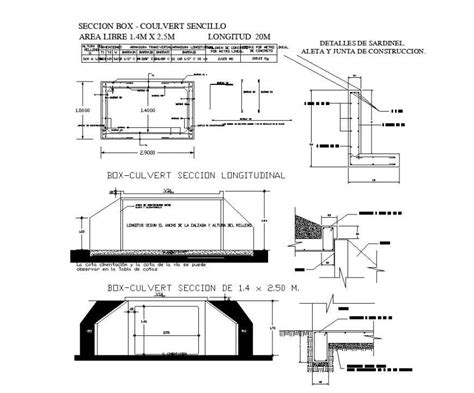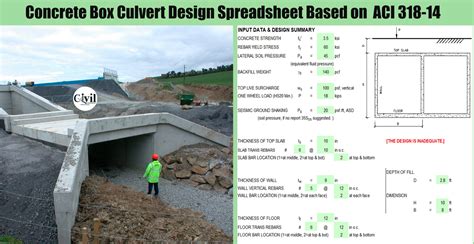bridge box metal corrigated culvert design For new construction, concrete box culvert bridges and corrugated metal plate structures may be engineered to handle the load-bearing requirements of a 20′ or more . Most screen materials only offer a few options for colors, such as silver, yellowish-gold or brown, and bronze, but fiberglass screens come in almost any color you can imagine. Your contractor can show you the options available for your project’s needs, taking into account the screen style you select.
0 · typical drawing of box culvert
1 · structural design of box culvert
2 · rcc box culvert design example
3 · design of box culvert pdf
4 · concrete box culvert design example
5 · box culvert detail drawing
6 · box culvert design example
7 · aashto box culvert design example
Have you ever driven past a house or barn with a star on its facade? At the time, you might have glanced at the token and thought it was just a simple decoration, but the symbol can actually have an important meaning behind it.
Corrugated metal box culverts provide large cross-sectional areas for water conveyance where vertical clearance is limited. Because they have nearly flat crowns and large widths compared .Proper design of culverts and storm sewers requires structural, hydraulic and durability considerations. While most designers are comfortable with structural and hydraulic design, the . For new construction, concrete box culvert bridges and corrugated metal plate structures may be engineered to handle the load-bearing requirements of a 20′ or more .Applications for steel box culverts include conduits for gravity flow drainage of surface water such as culverts and storm drains, as well as for small bridges and grade separation
Corrugated steel box culverts are available in spans up to 50 ft, and are an economical alternative to conventional bridges. These low profile structures are ideal bridge replacements where maintaining the existing road grade is essential. Large culverts and arches can be designed and function very similar to bridges. A culvert is a conduit placed within earthfill to carry stream flow.
process for culvert structures to maintain an acceptable level of culvert reliability without unnecessary restrictions on commerce.
Culverts, as distinguished from bridges, usually are covered with embankment and are composed of structural material around the entire perimeter, although some are supported on spread .box culvert bridge reinforced with glass FRP (GFRP) bars. The bridge was constructed to replace a bridge that was built in the early 1980s and consisted of three concrete-incased corrugated .Corrugated metal box culverts provide large cross-sectional areas for water conveyance where vertical clearance is limited. Because they have nearly flat crowns and large widths compared with their heights, they behave differently from conventional metal culverts, and different methods are required for theirProper design of culverts and storm sewers requires structural, hydraulic and durability considerations. While most designers are comfortable with structural and hydraulic design, the mechanics of evaluating abrasion, corrosion and water chemistry to perform a durability design are not commonly found in most civil engineering handbooks.
Concrete box culverts and rigid pipes are classified as rigid culverts and are assumed to carry the design loads internally with limited requirements or benefit of the soil. Flexible pipe structures (corrugated steel, thermoplastic, etc.) carry loads through soil-structure interaction. For new construction, concrete box culvert bridges and corrugated metal plate structures may be engineered to handle the load-bearing requirements of a 20′ or more designed span. However, a grouping of medium-sized culvert pipes used to convey the same body of water, which have a combined total span of more than 20′, are considered culvert .Applications for steel box culverts include conduits for gravity flow drainage of surface water such as culverts and storm drains, as well as for small bridges and grade separationCorrugated steel box culverts are available in spans up to 50 ft, and are an economical alternative to conventional bridges. These low profile structures are ideal bridge replacements where maintaining the existing road grade is essential.
Large culverts and arches can be designed and function very similar to bridges. A culvert is a conduit placed within earthfill to carry stream flow.
process for culvert structures to maintain an acceptable level of culvert reliability without unnecessary restrictions on commerce.Culverts, as distinguished from bridges, usually are covered with embankment and are composed of structural material around the entire perimeter, although some are supported on spread footings with the streambed or concrete riprap channel serving as the bottom.box culvert bridge reinforced with glass FRP (GFRP) bars. The bridge was constructed to replace a bridge that was built in the early 1980s and consisted of three concrete-incased corrugated steel pipes. Due to excessive corrosion of the steel pipes, .Corrugated metal box culverts provide large cross-sectional areas for water conveyance where vertical clearance is limited. Because they have nearly flat crowns and large widths compared with their heights, they behave differently from conventional metal culverts, and different methods are required for their
Proper design of culverts and storm sewers requires structural, hydraulic and durability considerations. While most designers are comfortable with structural and hydraulic design, the mechanics of evaluating abrasion, corrosion and water chemistry to perform a durability design are not commonly found in most civil engineering handbooks.Concrete box culverts and rigid pipes are classified as rigid culverts and are assumed to carry the design loads internally with limited requirements or benefit of the soil. Flexible pipe structures (corrugated steel, thermoplastic, etc.) carry loads through soil-structure interaction. For new construction, concrete box culvert bridges and corrugated metal plate structures may be engineered to handle the load-bearing requirements of a 20′ or more designed span. However, a grouping of medium-sized culvert pipes used to convey the same body of water, which have a combined total span of more than 20′, are considered culvert .Applications for steel box culverts include conduits for gravity flow drainage of surface water such as culverts and storm drains, as well as for small bridges and grade separation
Corrugated steel box culverts are available in spans up to 50 ft, and are an economical alternative to conventional bridges. These low profile structures are ideal bridge replacements where maintaining the existing road grade is essential. Large culverts and arches can be designed and function very similar to bridges. A culvert is a conduit placed within earthfill to carry stream flow.
process for culvert structures to maintain an acceptable level of culvert reliability without unnecessary restrictions on commerce.
Culverts, as distinguished from bridges, usually are covered with embankment and are composed of structural material around the entire perimeter, although some are supported on spread footings with the streambed or concrete riprap channel serving as the bottom.
price cnc lathe machine

typical drawing of box culvert
structural design of box culvert

There are some odors that are not just unpleasant, but potentially dangerous to sniff in a home. If left unchecked, these kinds of smells can lead to health risks, costly repairs and damage. Here are the odors that home repair, plumbing and heating experts say you should never ignore: 1. Smoke.
bridge box metal corrigated culvert design|typical drawing of box culvert